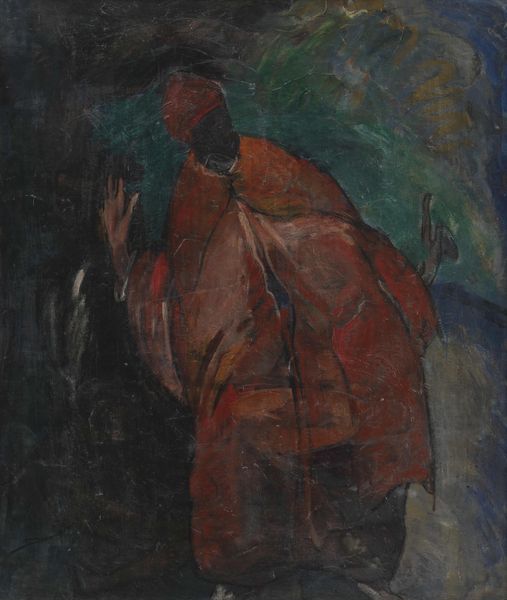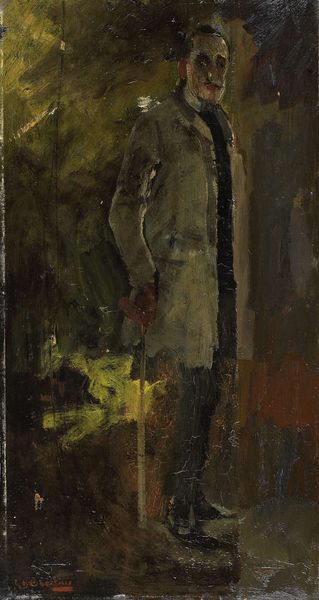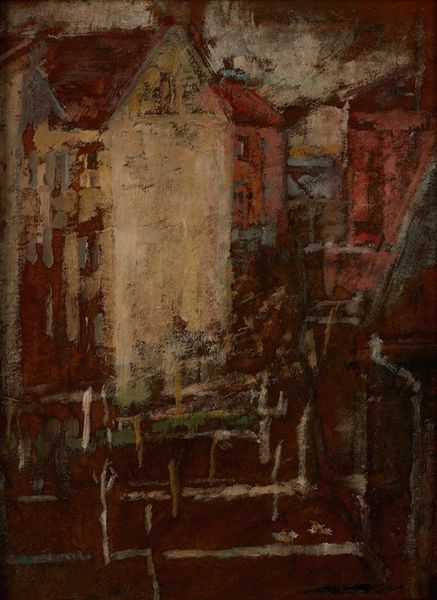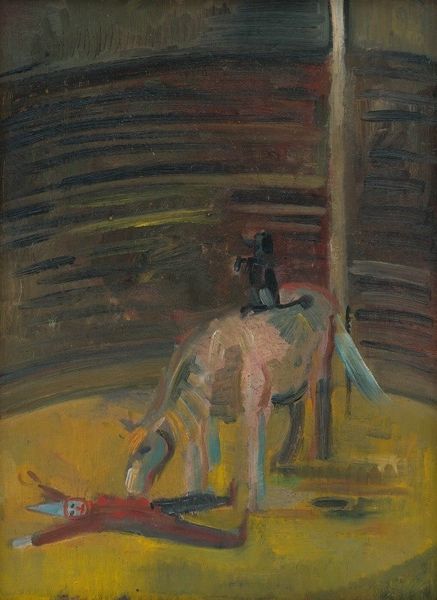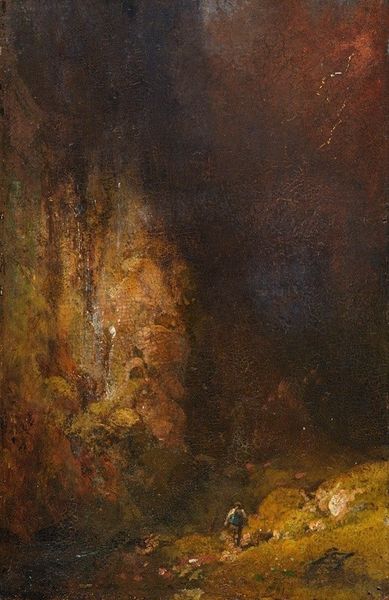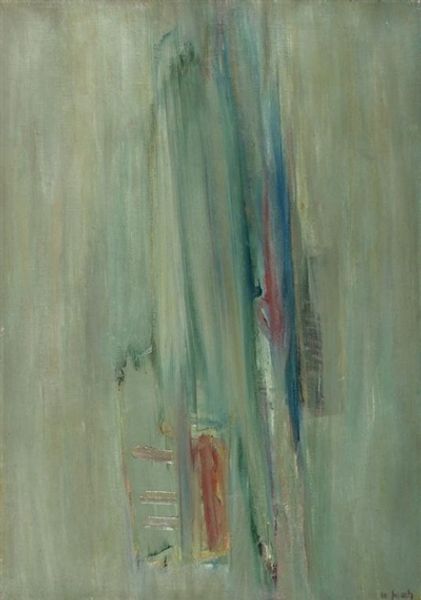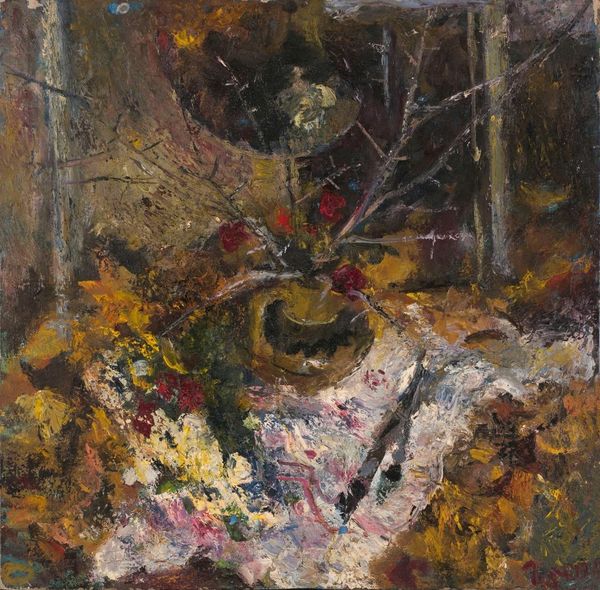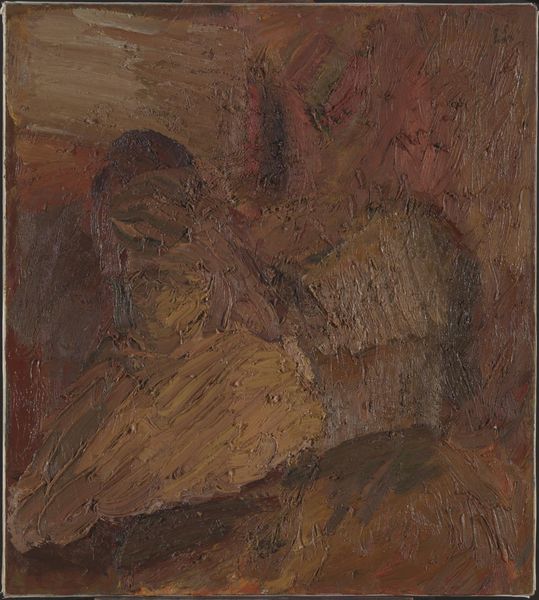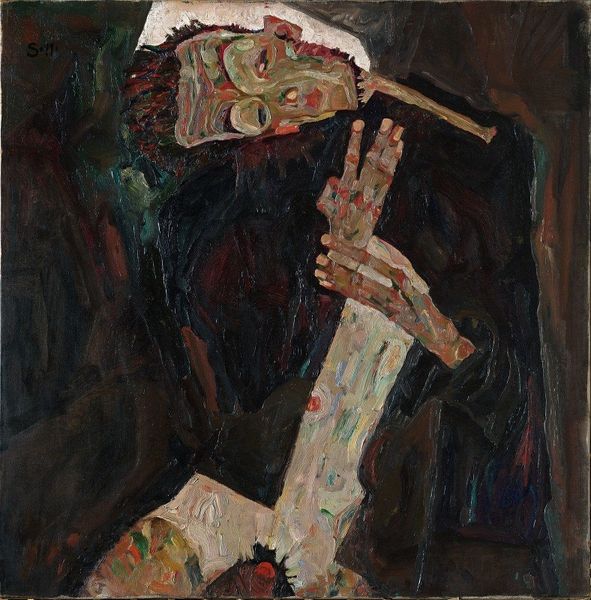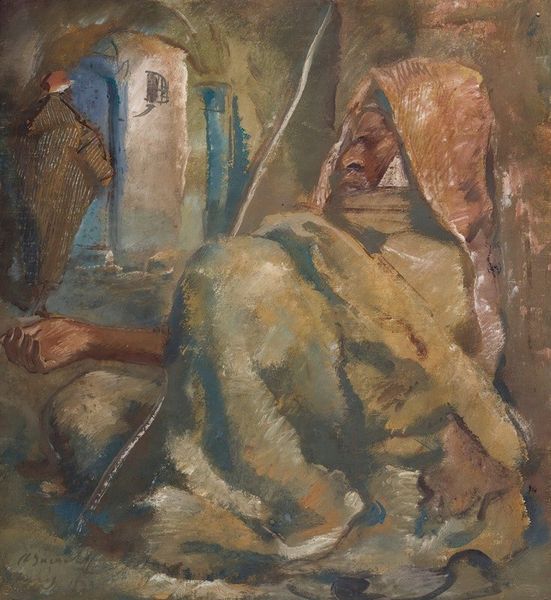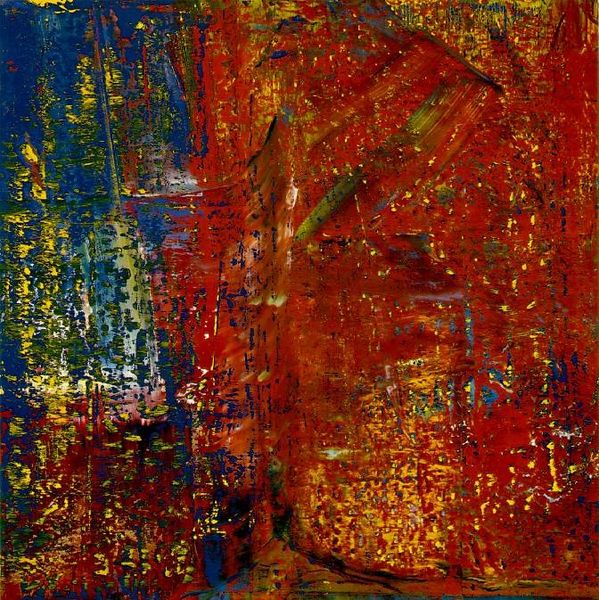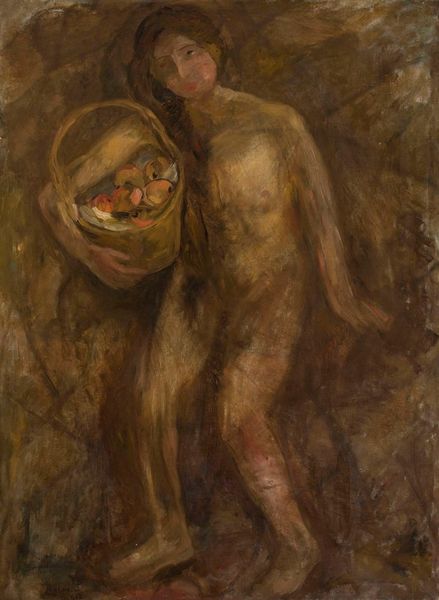
Copyright: Public Domain: Artvee
Editor: We are looking at James Ensor's "Still-life," created around 1880, using oil paints. I must say, I am immediately struck by how dimly lit the work is, but there is still this dynamic splash of red in the composition. What do you see in this piece? Curator: Dimly lit indeed! It's almost as if the objects are emerging from a dream. Ensor, even this early in his career, invites us into a realm where symbolism and personal emotion intertwine. This isn't your grandma's still-life; what strikes you as you consider the objects present? Editor: Well, to be honest, they’re quite difficult to make out clearly! There seems to be some kind of figure draped in red, and maybe some kind of dark bowl with a yellow spot beside it, against this impenetrable dark brown background? Curator: Exactly! The obscurity is intentional, a deliberate choice to move away from purely representational painting. Perhaps he is suggesting something about the unseen stories that inanimate objects might carry? The red figure…does it strike a particular chord for you? Editor: It's so visceral, that raw red. I feel it kind of clashes with what I expected a still life to look like? More vibrant, more alive somehow. I assumed it was a quiet, safe genre! Curator: Ah, and Ensor, spoiler alert, wasn't one for playing it safe! Red here could be vitality, or anger, or perhaps even a premonition of some future turmoil – the masks and social critiques he’s famous for were still to come. What I find interesting is the dance between visibility and veiling, a suggestion of what lies beneath the surface. Editor: So, the haziness is part of the message! This makes me see "Still-life" differently. Curator: Precisely! Art can open us up to the mysteries hidden in the mundane. I will never look at fruit in the same way, will you?
Comments
No comments
Be the first to comment and join the conversation on the ultimate creative platform.
